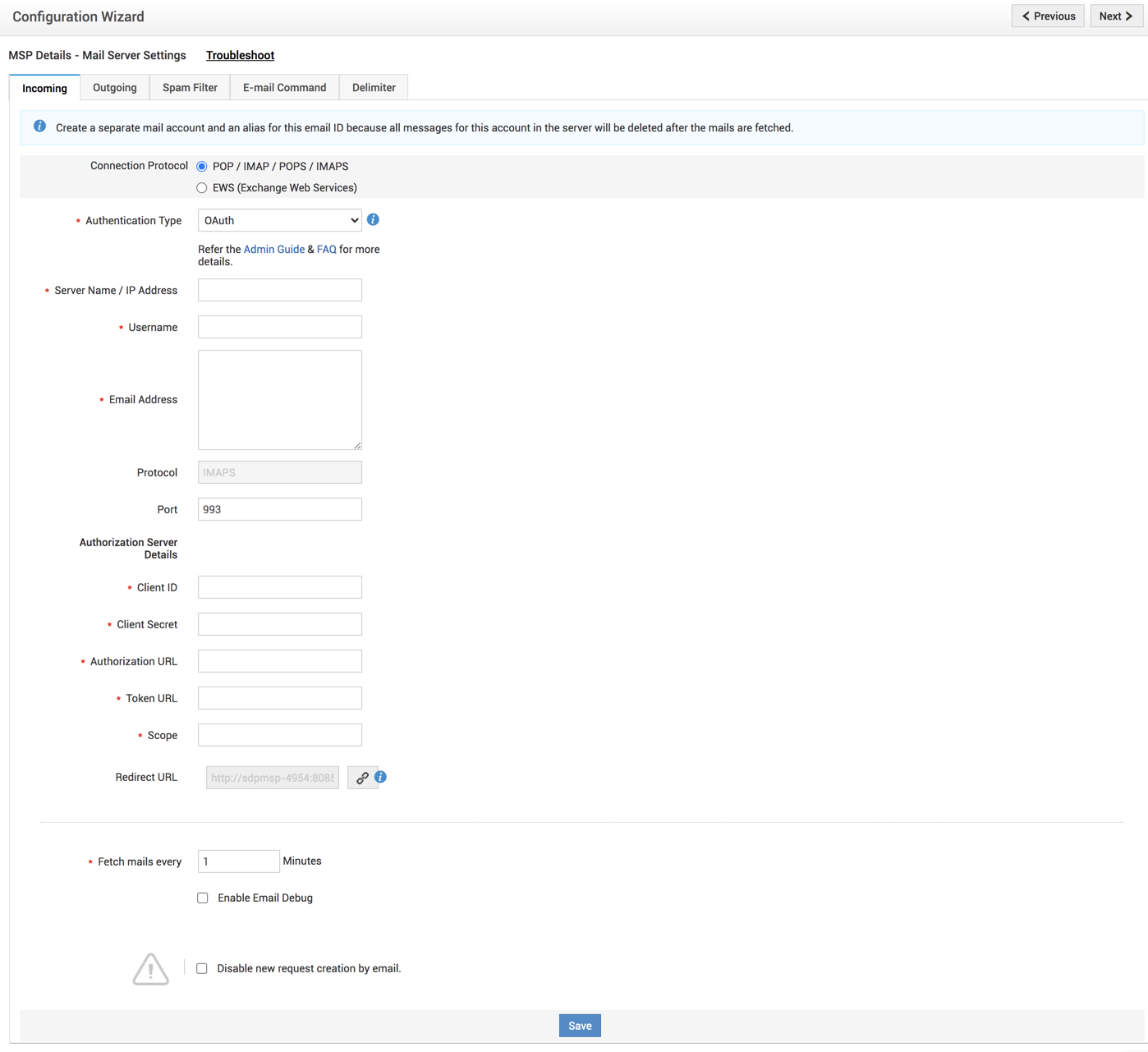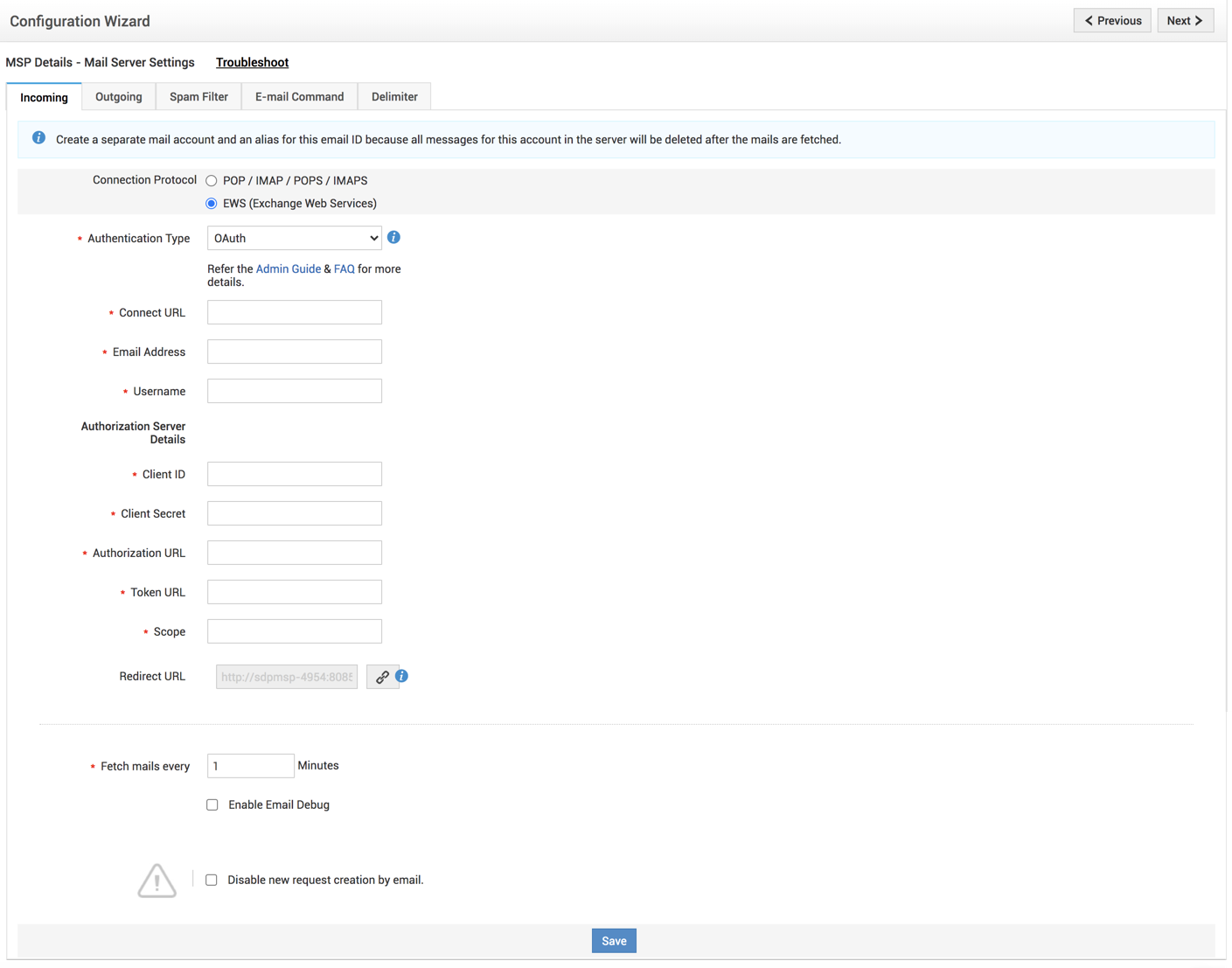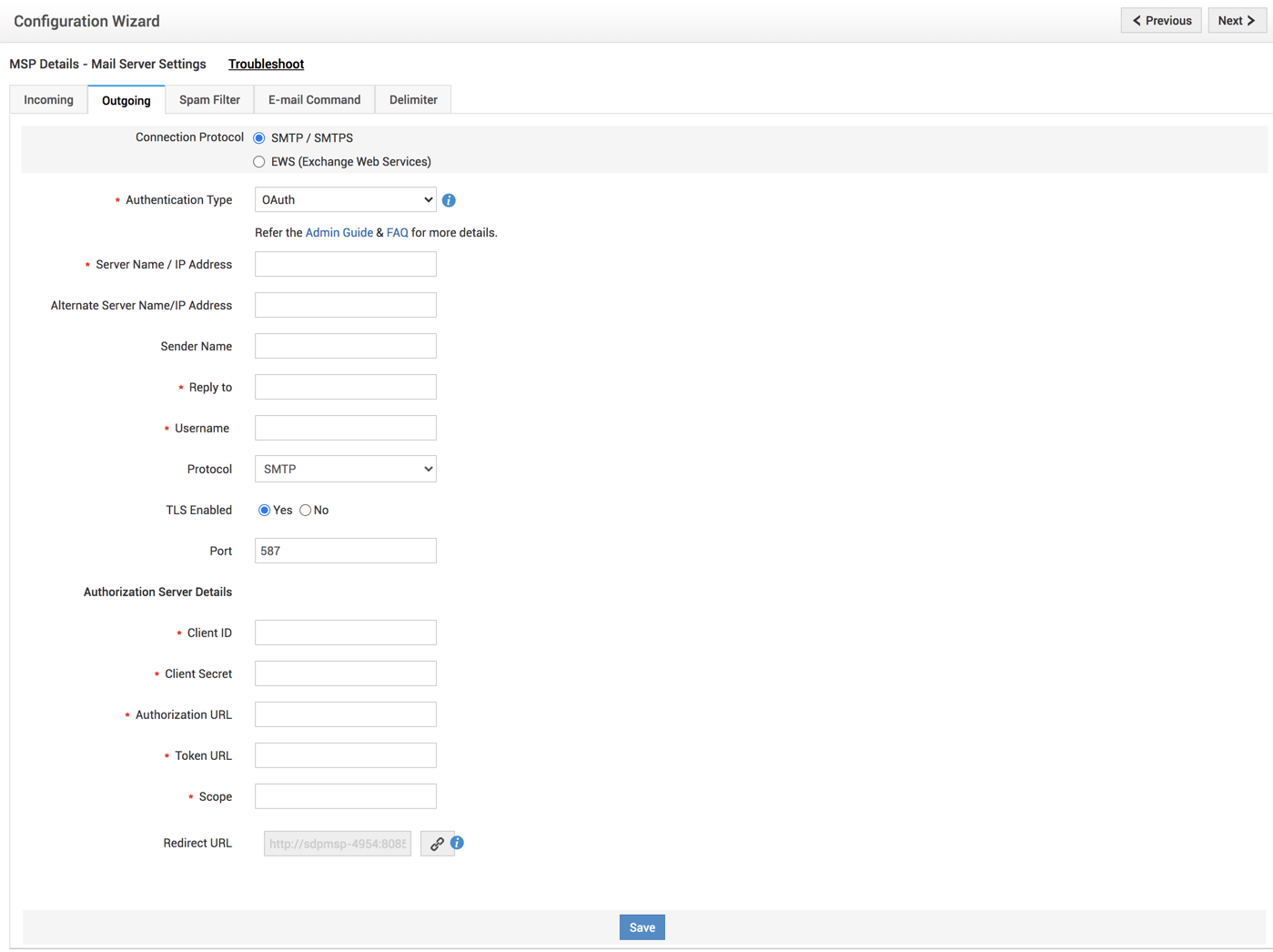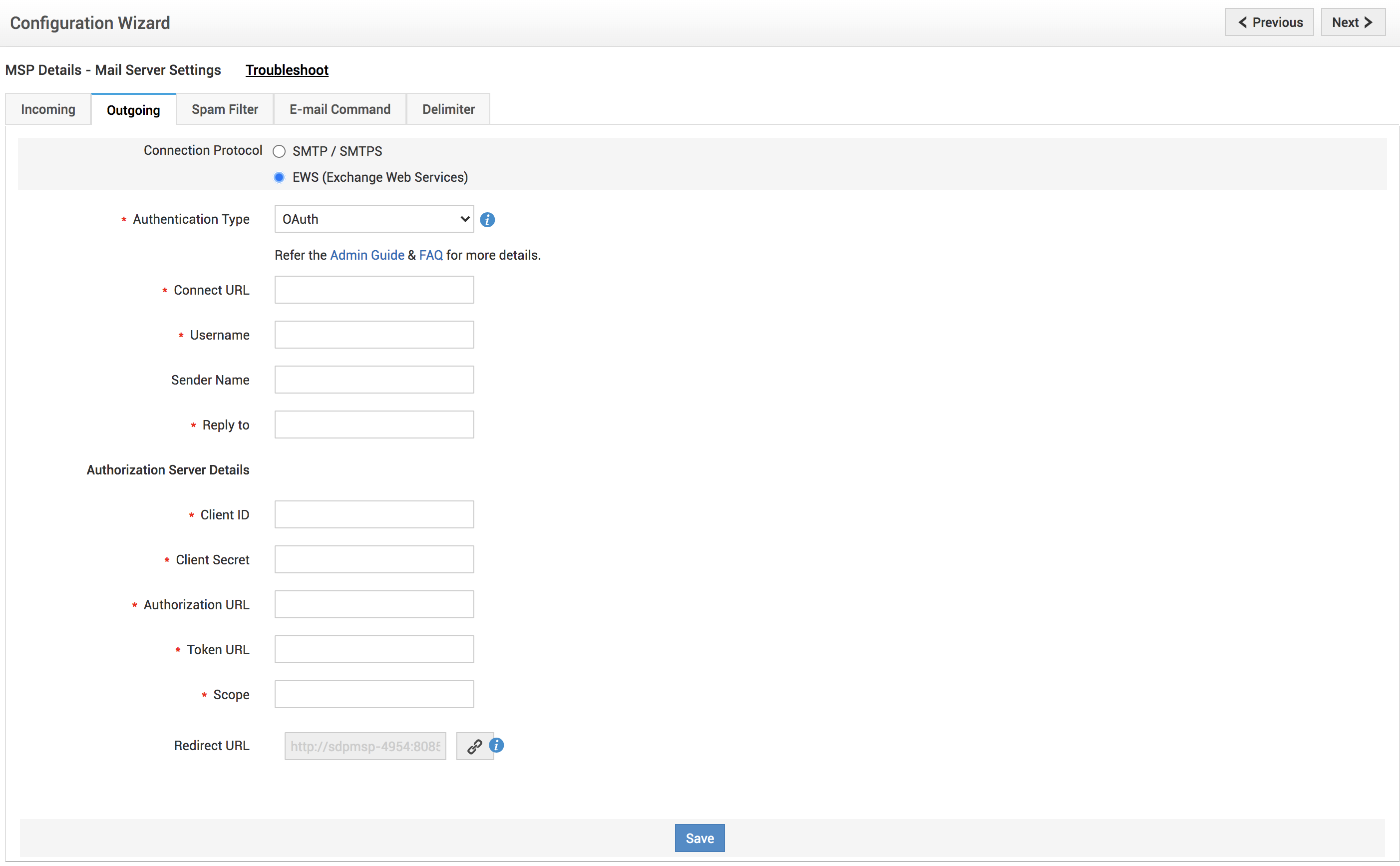OAuth Authentication for Mail Server
OAuth is a standard authorization protocol that provides delegated access to a protected resource using web tokens instead of passwords. With OAuth, resource owners can configure separate permissions for each client requesting access to the same resource and modify/revoke the access at any point of time.
How does OAuth work
OAuth authentication involves the following entities:
-
Resource Owner: The user who owns the protected resource.
-
Client: An end-user or application, requesting access to the resource.
-
Authorization Server: The server that generates the access token for the client with the resource owner's approval.
-
Resource Server: The server that hosts the protected resource.
To access a protected resource, the client should obtain an authorization grant from the resource owner and pass it on to the authorization server. The authorization server validates the authorization grant and generates an access token with the approval of the resource owner. The client can use this token to access the protected resource hosted by the resource server.
The authentication process with OAuth is explained in the flowchart below:

In this case, ServiceDesk Plus MSP acts as the Client requesting access to the Mail Server (Resource Owner) and obtains the authorization grant. This authorization grant is processed through the Authorization Server of the corresponding mail box (say G Suite for Gmail and Microsoft Azure for O365), which generates an access token with the Resource Owner's approval. Using this access token, ServiceDesk Plus MSP can access the Mail Server.
Configuring OAuth for Mail Server
Incoming Mail Server Settings
To configure OAuth for incoming mail settings,
-
Go to Admin >> Helpdesk >> Mail Server Settings >> Incoming.
-
Choose the Connection Protocol.
-
If you choose POP/IMAP/POPS/IMAPS:
-
Choose OAuth as the Authentication Type and provide the Server Name / IP Address of the mail server.
-
Enter the Username and Email Address(es) of the associated mailbox.
-
The Protocol is IMAPS and is non-editable, as OAuth authentication is supported for IMAPS only.
-
The relevant Port will be auto-populated. You can modify the port if required.

-
If you choose EWS:
-
Choose OAuth as the Authentication Type and enter the Connect URL.
-
Enter the Email Address and Username of the associated mailbox.

-
Obtain Client ID, Client Secret, Authorize URL, Access Token URL, and Scope from the authorization server using the Redirect URL. We have tested mail fetching for EWS with Azure and Java Mail API with Gsuite. Click the link to know the step-by-step instructions to generate the client details from these servers.
-
Enter the time interval (in minutes) to fetch emails.
-
Select Enable Email Debug if required. This is used to analyze problems in fetching/sending emails.
-
Select Disable new request creation by email if you do not wish to add incoming emails as new requests.
-
Click Save. The user consent window of the mail server pops up.
|
NOTE
|
Please ensure that you have not blocked pop-ups and redirects in your browser to view the user consent window. |
-
Provide your login credentials and submit your consent for the permissions.
-
A success message displays upon establishing a secure connection.
The application can now fetch emails from the mail server configured with OAuth authentication.
Configuring OAuth for Outgoing Mail Settings
To configure OAuth for incoming mail,
-
Go to Admin >> Helpdesk >> Mail Server Settings >> Outgoing.
-
Choose the Connection Protocol.
-
If you choose SMPT/SMPTS:
-
Choose OAuth as the Authentication Type and enter the Server Name/IP Address, Alternate Server Name/IP Address.
-
Provide the Sender Name and Reply to email address.
-
Enter the Username of the associated mailbox and choose the Protocol.
-
Enable TLS if required.
-
The relevant Port will be auto-populated. You can modify the port if required.

-
If you choose EWS:
-
Provide the Connect URL and the Username of your mail box.
-
Enter the Sender Name, and Reply to email address.

-
Obtain Client ID, Client Secret, Authorize URL, Access Token URL, and Scope from the authorization server using the Redirect URL. We have tested mail sending for EWS with Azure and Java Mail API with Gsuite. Click the link to know the step-by-step instructions to generate the access tokens from these servers.
-
Click Save. The user consent window of the mail server pops up.
-
Provide your login credentials and submit your consent for the mentioned permissions. The configuration is completed with the display of a success message.
The application can now send emails from the mail server configured with OAuth authentication.


